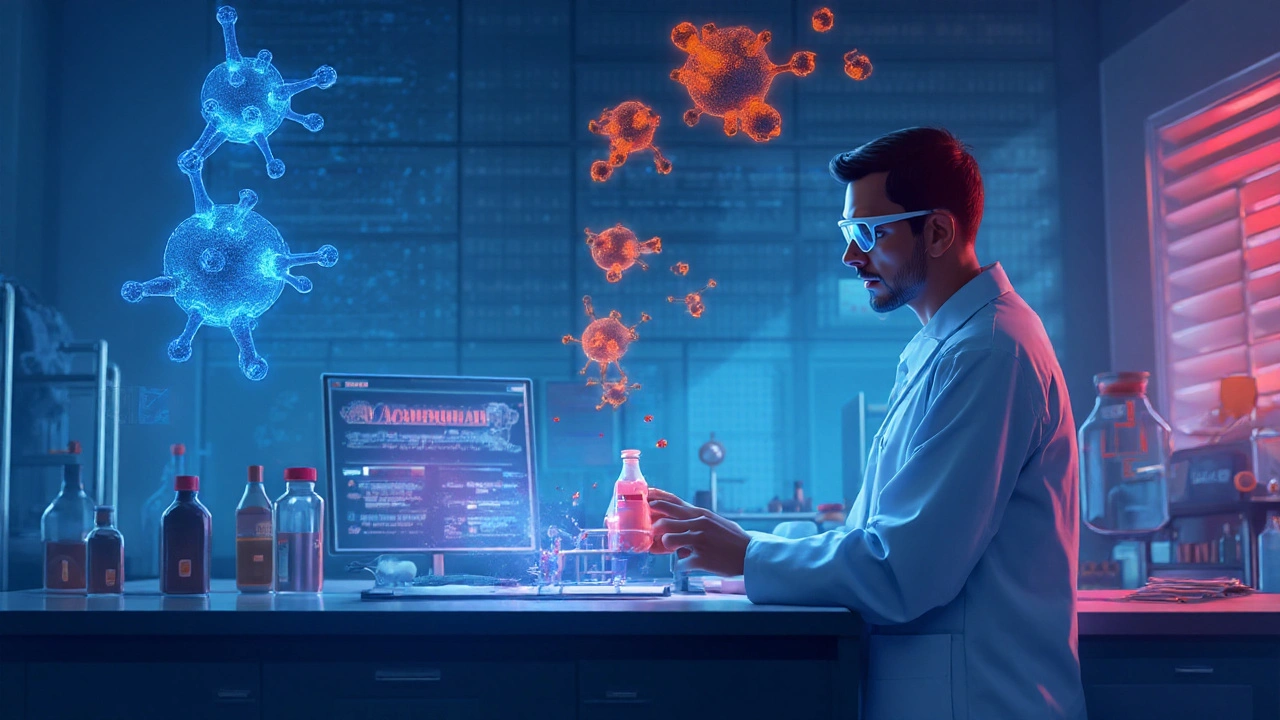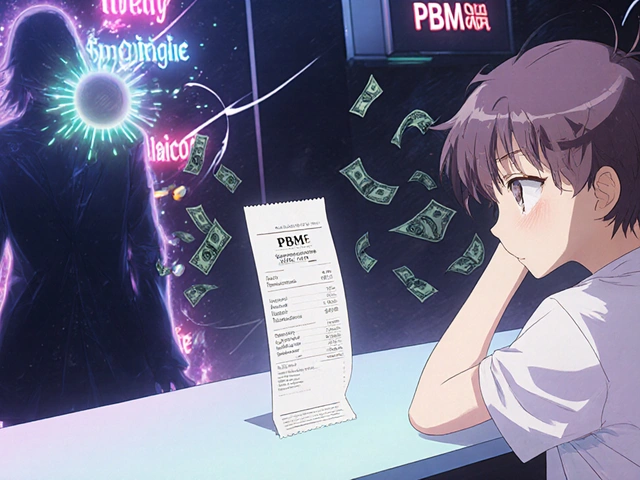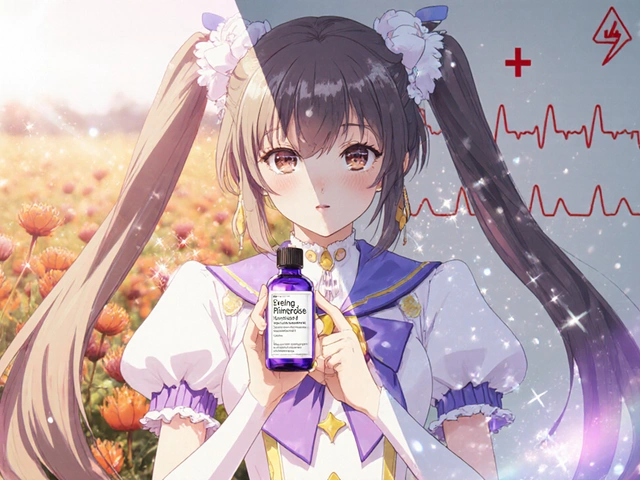Alcohol Dependence Medication Matcher
Personal Health Profile
Treatment Goals
Recommended Medication:
Acamprosate is a brain‑acting medication approved to maintain abstinence in people recovering from alcohol use disorder (AUD). It works by modulating the balance between excitatory glutamate and inhibitory GABA pathways, helping the brain settle after chronic drinking. If you’ve ever wondered whether Acamprosate is the right choice or if another drug might suit you better, this guide walks through the science, the alternatives, and the practical factors that shape a good match.
How Acamprosate Helps the Recovering Brain
Long‑term alcohol exposure boosts glutamate activity (the brain’s “go” signal) and dampens GABA activity (the “stop” signal). When drinking stops, the system stays in overdrive, causing cravings, anxiety, and sleep problems. Acamprosate acts as a negative modulator at NMDA‑type glutamate receptors while gently enhancing GABA‑A function. The net effect is a calmer, more balanced neurochemical environment, which translates into fewer cravings for many patients.
Key attributes of Acamprosate include:
- Typical dose: 666mg (two 333mg tablets) three times daily.
- Requires normal kidney function; dosage is reduced for severe renal impairment.
- Side‑effects are usually mild: gastrointestinal upset, dry mouth, and occasional skin rash.
Because it does not block alcohol’s rewarding effects, Acamprosate is most effective when combined with psychosocial support and a genuine commitment to abstinence.
Other Medications on the Market
While Acamprosate sits in the “support abstinence” camp, several other drugs target different aspects of AUD. Below are the most‑commonly prescribed alternatives.
Naltrexone is a opioid‑receptor antagonist that blunts the euphoric “high” from drinking, reducing the desire to consume alcohol. It comes in daily oral tablets (50mg) or a once‑monthly injection (380mg). Naltrexone is especially useful for people who still want to drink occasionally but want to keep the quantity low.
Disulfiram is a deterrent medication that causes unpleasant flushing, nausea and palpitations when alcohol is ingested. The classic “Antabuse” effect makes drinking an uncomfortable experience, encouraging strict abstinence. It’s taken as a 250mg tablet once daily, but strict adherence to a no‑alcohol rule is mandatory.
Baclofen is a GABA‑B receptor agonist originally used for spasticity, now repurposed to reduce alcohol cravings. Doses vary widely (30‑120mg per day) and are titrated based on tolerance. The drug’s calming effect can help people with high anxiety during early sobriety.
Topiramate is a broad‑acting anticonvulsant that influences glutamate, GABA and carbonic anhydrase pathways, indirectly lowering alcohol cravings. Typical dosing starts at 25mg nightly and slowly climbs to 200mg per day. Side‑effects include cognitive dulling and paresthesia, so monitoring is essential.
Gabapentin is a structural analog of GABA that stabilises neuronal firing, often prescribed off‑label for alcohol withdrawal and post‑acute cravings. Doses range from 300mg to 1800mg per day, split across three doses. It’s particularly helpful for people with comorbid neuropathic pain.
Side‑Effect Profiles at a Glance
| Drug | Typical Side‑Effects | Key Contra‑Indications |
|---|---|---|
| Acamprosate | Diarrhea, nausea, dry mouth | Severe renal impairment |
| Naltrexone | Headache, nausea, fatigue | Liver failure, opioid dependence |
| Disulfiram | Flushing, palpitations, hypotension when alcohol is consumed | Cardiovascular disease, severe liver disease |
| Baclofen | Drowsiness, dizziness, weakness | Renal failure, severe depression |
| Topiramate | Word‑finding difficulty, paresthesia, weight loss | Kidney stones, glaucoma |
Choosing the Right Medication: Decision Factors
When you sit down with a prescriber, the conversation should go beyond “which pill is cheapest?” and focus on three pillars: biological fit, lifestyle compatibility, and treatment goals. Below is a quick rule‑of‑thumb matrix.
- Kidney health matters. Acamprosate and Baclofen are cleared renally; if eGFR < 30mL/min, consider Naltrexone or Topiramate.
- Desire for occasional drinking. Naltrexone’s reward‑blocking effect lets some people sip without heavy cravings, unlike Disulfiram which punishes any alcohol intake.
- Motivation style. If you respond well to aversive conditioning, Disulfiram’s “make‑drinking‑bad” effect can be powerful. For those who need a gentle neurochemical balance, Acamprosate or Baclofen may feel less punitive.
- Comorbid conditions. Anxiety or sleep issues tilt the scale toward Baclofen or Gabapentin, while liver disease steers you away from Naltrexone.
- Adherence practicality. Daily multiple tablets (Acamprosate) can be a hurdle; the monthly injectable form of Naltrexone removes daily remembering.

Practical Tips for Starting Any AUD Medication
Regardless of which drug you select, these steps improve success odds:
- Confirm baseline labs - liver enzymes, renal function, complete blood count.
- Set a clear abstinence or reduction goal with a therapist or support group.
- Begin with the lowest recommended dose; titrate up over 1‑2 weeks to minimise side‑effects.
- Track cravings daily using a simple journal; note any new symptoms.
- Schedule a follow‑up appointment after 4 weeks to review efficacy and adjust dosage.
Many patients find that pairing medication with Cognitive‑Behavioural Therapy (CBT) or Motivational Interviewing dramatically boosts outcomes. The medication helps the brain settle; the therapy reshapes habits and thought patterns.
Real‑World Scenarios
Scenario 1 - The “Weekend Drinker.” Jane is 38, liver‑healthy, and wants to cut back to occasional social drinking. Her doctor suggests Naltrexone because it dampens the rewarding buzz, allowing her to enjoy a glass of wine without spiralling. She can still have a drink, but the urge to finish the bottle fades.
Scenario 2 - The “Hardcore Abstainer.” Mark has been sober for six months but struggles with intense cravings during the night. His kidneys are fine, but he hates taking many pills. Acamprosate, taken three times a day, stabilises his glutamate‑GABA balance, and he reports a noticeable drop in midnight urges.
Scenario 3 - The “Anxious Relapser.” Lisa suffers from generalized anxiety and intermittent alcohol use to self‑medicate. Baclofen’s calming, muscle‑relaxant properties ease her anxiety while also curbing cravings, making it a better fit than Naltrexone, which doesn’t address anxiety directly.
When Medication Isn’t Enough
Even with the best pharmacology, relapse rates remain high if the psychosocial component is missing. Look for community resources like Alcoholics Anonymous, SMART Recovery, or local counseling services. Combining medication with regular peer‑support meetings reduces the odds of slipping back into heavy drinking by nearly 30% in large cohort studies.
Future Directions in AUD Pharmacotherapy
Researchers are exploring drugs that target the orexin system (e.g., suvorexant) and neuroinflammation pathways. Early trials suggest these could work synergistically with existing agents like Acamprosate. Keep an eye on clinical trial registries; next‑generation options may become available within a few years.
Frequently Asked Questions
What makes Acamprosate different from Naltrexone?
Acamprosate works by balancing glutamate and GABA activity after the brain has adapted to chronic alcohol, while Naltrexone blocks the opioid receptors that mediate the rewarding “high.” In practice, Acamprosate is better for people committed to full abstinence, whereas Naltrexone can help those who want to limit drinking without quitting completely.
Can I take Acamprosate if I have kidney disease?
Acamprosate is cleared through the kidneys, so severe renal impairment (eGFR < 30mL/min) is a contraindication. Your doctor may lower the dose or recommend a different medication.
How long does it take to feel the benefits of Acamprosate?
Most patients notice a reduction in cravings after about two weeks of consistent dosing, but full effect can take up to a month. Patience and adherence are key.
Is it safe to combine Acamprosate with other AUD medications?
Combining Acamprosate with Naltrexone or Baclofen is sometimes done under close medical supervision, but the risk of additive side‑effects (e.g., dizziness, GI upset) must be weighed. Always discuss combos with your prescriber.
What should I do if I miss a dose of Acamprosate?
Take the missed tablet as soon as you remember, unless it’s almost time for the next dose. Do not double up; double‑dosing can increase GI side‑effects.






Suman Wagle
September 26, 2025 at 00:11
Ah, the eternal quest for the “perfect” booze‑breaker – sounds like a philosopher’s stone made of pills, doesn’t it? Still, if you’re chasing full abstinence and your kidneys aren’t crying for help, Acamprosate might just be the calm you need. Just remember, it won’t magically erase cravings; you still have to stay optimistic and keep the brain‑training going.